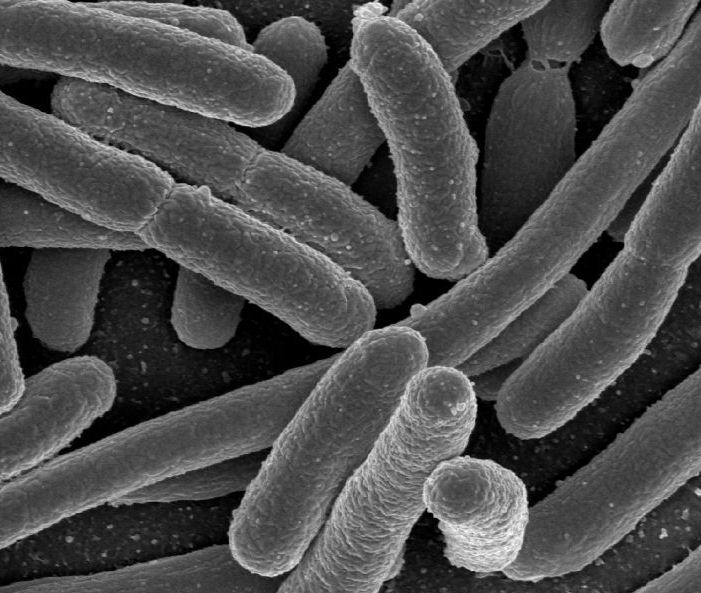Team:DTU-Denmark/Vision
From 2011.igem.org
Vision
Contents |
The problem
Gene silencing in bacteria is fundamental to basic and applied research. Gene knockouts are widely used to investigate gene function, but have severe limitations. Gene knockout requires technology which is only developed for a handful of organisms and can only be used to study non-essential genes. Following the explosion of known bacterial species new paradigms for research on genes are needed.
In bioengineering gene expression is often regulated by inducible promoters, but there exist only a few good inducible promoters. Most of these promoters are leaky expressing genes in the off state, and laborious chromosomal engineering is needed to place a promoter in front of natural genes.
The idea
Gene silencing and induction could be improved by developing a system inspired by chitobiose regulation in E. coli. The system provides an engineering framework for gene silencing by utilizing trans-acting RNA regulation.
Chitobiose regulation contains unique and very interesting features. A small RNA regulates gene expression analogously to the highly versatile miRNAs of eukaryotes. The RNA selectively aims and facilitates the degradation of the mRNA of a target gene. A short sequence confers specificity enabling genetic engineering the system to target any gene.
In addition the chitobiose regulations system contains a second small RNA that regulates the first, enabling highly advanced schemes of regulation such as pulses. Having two small RNA components significantly increases the options to fine-tune an control gene expression. To conclude, the system has the potential to be a universal tool for easy and specific gene silencing or in other words a "Swiss army knife" of gene silencing.
Advantages
There are several reasons for using the trap-RNA system instead of commonly used solutions for gene silencing. The main reasons are the ease of use and the flexibility to target any gene. The trap-RNA system can simply be designed in silico, synthesized and transformed into your bacteria strain. Another major advantage is the area of applicability. Any organism that is sequenced, contains Hfq and is transformable can be subject to the trap-RNA system.
Other reasons include that the trap-RNA is complementary to any promoter based regulation and even complementary to other trap-RNA systems. Multiple trap-RNA systems can therefore be applied to the same biological circuit without interfering.
Furthermore, a series of unique properties arises from the system, one being the ability to easily fine-tune gene expression levels. Hence the trap-RNA system can be used to trouble-shoot designs of synthetic biology by quickly screening levels of gene expression.
The trap-RNA system provides unique flexibility for gene silencing in prokaryotes enabling control and tuning of gene expression. The specificity of the system depends on base pair complementarity. Therefore, it can be theoretically designed to target any gene of interest by simply altering the sequences to match the target gene. Moreover, multiple trap-RNA systems can be applied to the same biological circuit without interference.
This can facilitate engineering of other systems. Picked a promoter that is too strong? Use our system, and only induce the small RNA a little, thus lowering the level of product. Thus, you can fine-tune a system that has already been designed, or you can just design your system with the strongest promoter there is, and use our system to tune it.
Since the small RNA (as indicated by the name) is small, this is not a big expense. sRNAs can be ordered as complementary single stranded oligonucleotides (~100nt), annealed and cloned.
The second big reason is area of applicability. Any organism that is:
- sequenced
- has known stable plasmids
- has hfq
is a potential target for our system. This includes many organisms that are difficult or impossible to engineer chromosomally like Pseudomonales or Gram positive bacteria.
Within the controlled environment of Biobricks the possibilities become even greater. Design your target gene with a unique Shine-Dalgarno and you can target just that gene, or use the same Shine-Dalgarno for all your genes and turn off your entire construct at once.
For the scientists there are a few more advantages: You can easily knock down genes in the middle of an operon as well as you can temporarily knock down essential genes and transcription factors. And all of this without changing the chromosome so your strain remains wild-type until the moment you knock down the targeted gene that means as long as you induce your srRNA system.
Two Examples
Although the number of possible applications is huge we have chosen two, to show how this can be used in two very different settings: a basic research project and a huge industrial protein production.
Knocking down essential genes and transcription factors
Knocking out essential genes is difficult since they are needed by the cells and thus cannot simply be removed from the chromosome.
Knocking down transcription factors (TF's) is also problematic, although not necessarily lethal. It usually changes the phenotype of the cells. Chromosomally engineering a TF promoter will only show you the steady state achieved under these new conditions, and not the process of getting to the steady state.
One way to overcome this problem could be to place an repressible promoter in front of the gene, and only knock it out when needed. This has a number of issues. It involves chromosomally engineering the bacteria in question and thus changing the wild-type. Secondly, it is disruptive to remove the repressor once it has been added to the medium.
We propose a simple solution using our system:
Place the sRNA under control of the tetracycline promoter, and the trap-RNA under the control of the arabinose promoter. Target the sRNA to the TF or essential gene. When you want to knock down (or down-regulate) the gene, add anhydro-tetracycline. But when you want to restore function add arabinose. Should you want to disrupt once more, add glucose.
With one single transformation you get complete control over the genes. You can knock them down down-regulate them and restore them in whatever temporal manner you desire.
Production of a (toxic) protein
When using bacteria for production of proteins on an industrial scale, a tradeoff is often required. One can use a strong promoter to express a protein, which leads to the increase of the production per cell, but may lead to a lower cell density as well. Lowering the strength of the promoter has the opposite effect: productivity drops, but cell density rises. This is especially true for proteins that are toxic to the cells.
Another problem is that cells using the majority of their energy on protein production is under a heavy metabolic load, and tend to grow slowly.
To overcome this some experiments have been done using inducible promoters, which were only induced once the cell density is high. The downside is that these inducers are often expensive making the process unfeasible.
We propose another solution: place the gene of interest under the control of a strong constitutive promoter, constitutively express the small RNA, so the mRNA of the protein is degraded, and place the trap-RNA under the control of a stationary phase promoter. While growing, no energy will be wasted on producing protein, and upon reaching stationary phase the production of protein will be fully induced. The stationary phase promoter need not to be strong since even small amounts of the trap-RNA can degrade the sRNA.
In this way the production of protein will only be active when it is most effective, without using expensive inducers.
 "
"










